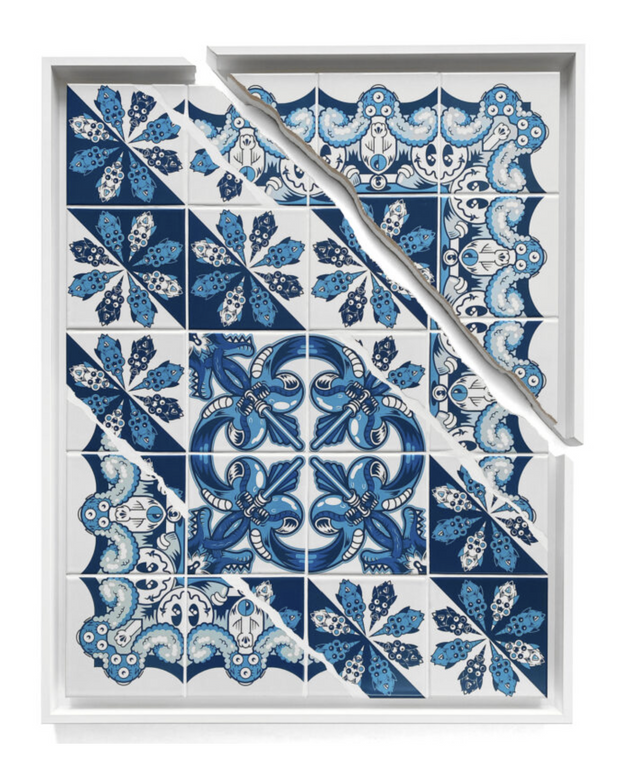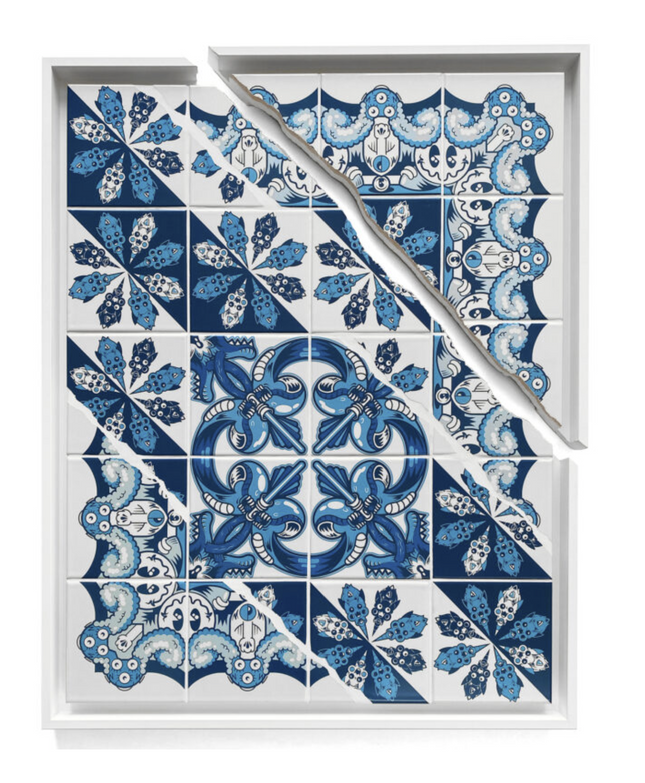
Mosaic

Add Fuel Fragment 01 Original Mixed Media Ceramic Painting by Add Fuel
Fragment 01 Original Mixed Media Ceramic Painting by Add Fuel of a Kind Artwork Framed by a Street Art Pop Artist. 2020 Signed Mixed Media Original Three Panel Ceramic Painting Size 23.8x29.8 Ready To Hand Fragmented 2 Piece Artwork FRAGMENT 01, 2020 Three Panel Ceramic 23.8 × 29.8 Significance of Fragment 01 in Street Pop and Graffiti Artwork Fragment 01 emerges as a distinctive piece within the realm of Street Pop and Graffiti Artwork, symbolizing a harmonious blend of traditional ceramic art with the raw vibrancy of street art. Crafted in 2020, this original mixed-media artwork by the artist Add Fuel stands out as a one-of-a-kind framed piece that resonates with the dynamic energy of pop art. At the heart of Fragment 01 lies the artist's innovative approach to ceramic painting, a medium often associated with classical and traditional art. However, Add Fuel recontextualizes this perception by introducing elements typical of street art, thus creating a bridge between two ostensibly disparate worlds. The three-panel ceramic painting, with dimensions of 23.8 by 29.8 inches, captures the essence of Street Pop Art through its fragmented two-piece composition. The artwork's division into panels underscores the fragmented nature of street art, often found in unexpected locations and subject to the ravages of the urban environment. The visual narrative of Fragment 01 is characterized by a bold use of color and pattern, hallmarks of both pop art and graffiti. The dominant blues and intricate designs pay homage to the azulejo tradition of ceramic tilework, while the fractured presentation speaks to the spontaneity and impermanence of graffiti. By signing the piece, Add Fuel imparts a sense of identity and ownership, a nod to the graffiti artist's signature tag. The artwork is also ready to hang, emphasizing its accessibility and the street art ethos of art for the people. The Legacy of Fragment 01 in Contemporary Art Fragment 01 does not just represent a fusion of artistic styles; it also embodies the cultural dialogue between traditional craftsmanship and contemporary street expression. Through its form and medium, the artwork invites viewers to reflect on the evolution of art as it moves from the protected confines of galleries to the open and often contested spaces of the street. It challenges preconceived notions about the value and place of art in society and celebrates the democratization of art that street art and pop art have long championed. The significance of Fragment 01 extends beyond its aesthetic appeal; it is a testament to the growing recognition of street art and pop art as legitimate and influential art forms. By encapsulating the spirit of these movements within the time-honored medium of ceramic, Add Fuel's artwork bridges past and present, offering a powerful statement on the enduring nature of art and its capacity to adapt and thrive in various contexts. The piece is a vibrant example of how Street Pop and Graffiti Artwork continue to shape and inspire the trajectory of contemporary art. Fragment 01 is not merely a work of art but a vibrant narrative that captures the intersection of history, culture, and innovation. Through this piece, Add Fuel propels the conversation about the place of street art within the broader artistic canon, asserting its value and relevance in today's art landscape.
$8,331.00


